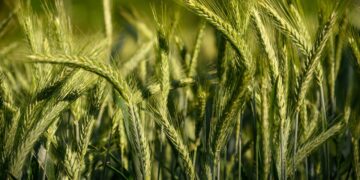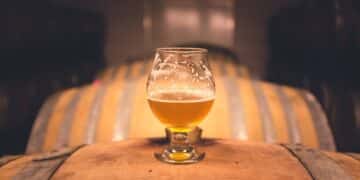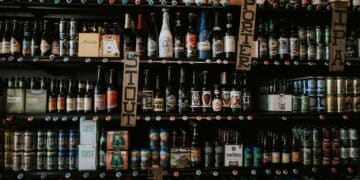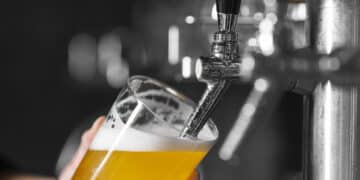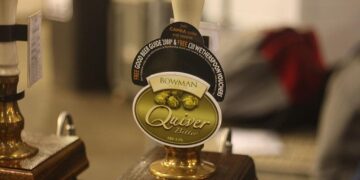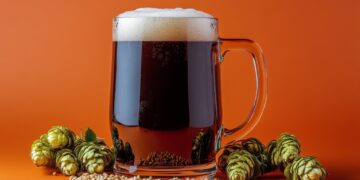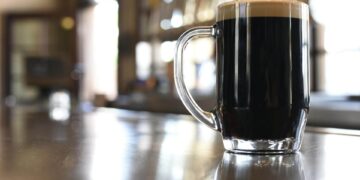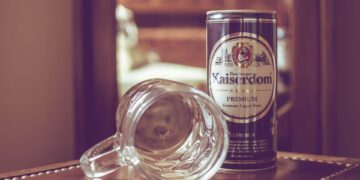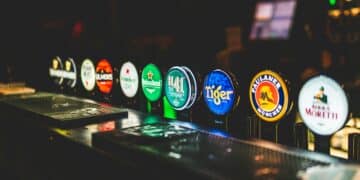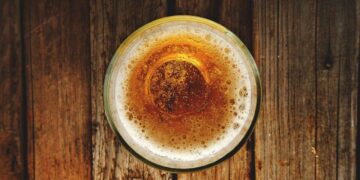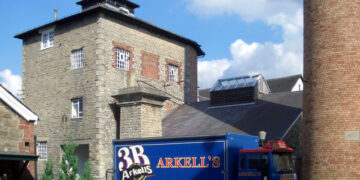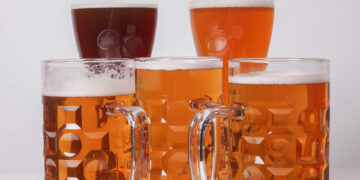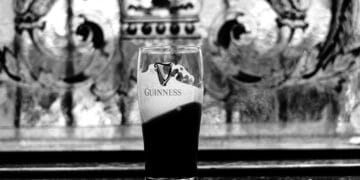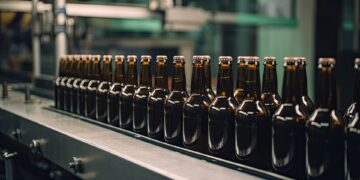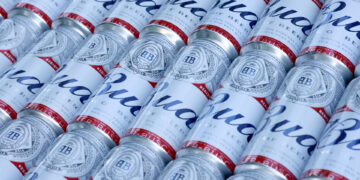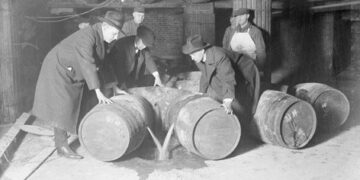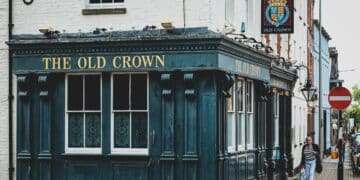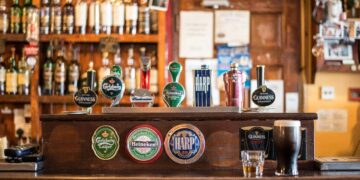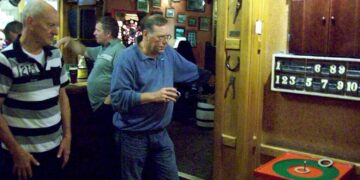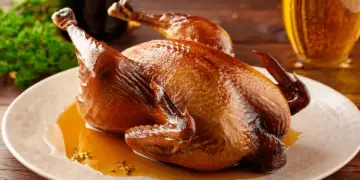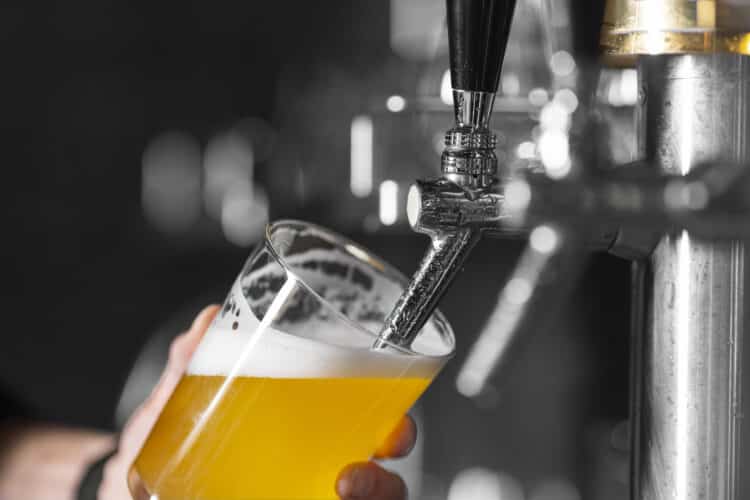Draught beer generally refers to beer that is hand pumped from a barrel (a keg or cask) and served in glasses, usually in a pub or bar (see article: ‘Family Brewers’ for more information on ‘cask beers’). These days canned beer may be referred as draft beer, especially if it contains a ‘widget’ device, which releases carbon dioxide and creates a ‘head’ on the beer once poured.
The precise definition of a draught beer is open to wide interpretation, with purists arguing that a draft beer must be served direct from a keg at source, direct for consumption. In this case, both draught beer that is then bottled, and canned beer that is pressurised using a widget do not qualify as draught beer.
Draught beer is generally unpasteurised (which means that it has not been sterilised) and for that reason must be consumed in a certain amount of time before it goes off. If a pint has gone off, you would be sure to know as beer is made, after all from plant matter, and rotting plant matter tastes bad!
There are occasional allegations that a pub is ‘watering down’ its beer in order to make extra profit. As unscrupulous as some landlords are (yes, they do have to make a living!), draught beer is very unlikely to be watered down. Piercing a barrel pressurised with carbon dioxide (as many of them are), in order to insert water into it would be costly and very dangerous.
Draught Beer: Debates
For many people, draught beer is the standard to adhere to. It is unclear exactly why this is, as draught beers vary greatly in style and quality: notably, the term draft does not denote that traditional brewing methods have been employed during production. Most likely, people are keen on the overall experience of drinking beer with a good head from a standard beer glass, in a pub. Draught beer is the beer that most people will have grown to enjoy over time. However, draught beer will often fall short of the standard promoted by groups such as CAMRA (The Campaign for Real Ale) who dismiss any beer that has had carbon dioxide added at the point of sale. For this reason, whilst many cask ales are real ales, and whilst the terms ‘draught beer’ and ‘cask ale’ are synonymous to an extent, there are a number of draft beers that are not real ale. A cask ale must not have any pressure added to it: Put simply as the term ‘draught’ simply means ‘to draw’ beer, a cask ale is a draught ale (as beer is ‘drawn for a barrel for service), whilst a draught ale (because it may have carbon dioxide added) is not always a ‘cask ale’. See… clear, as mud! This is further complicated if we consider that cask ale is not always real ale (again, see article: ‘Family Brewers’).
Additionally, debate surrounds the application of the term ‘draught’ to canned beer that contains a ‘widget device’ incorporated in the can to produce in Guinness – to use one example – a smooth frothy head. Canned beer is, arguably, not draught beer as it is not served from a cask or barrel.
These kind of debates are, of course, useful to an extent, however, constant wrangling amongst beer experts, although – honourably – aimed at reaching a clear, precise and honest categorisation of beer can, in fact, impede the simple enjoyment of a drink which is, after all, supposed to be enjoyed as a relaxant! The average punter, even with discerning tastes, may well just want to enjoy a beer regardless of whether it was draught ale, real ale or canned beer. The main thing is, surely, to maintain an awareness of the issues surrounding beer, so far as you wish to, but above all, to enjoy the wide variety of beers on offer!



